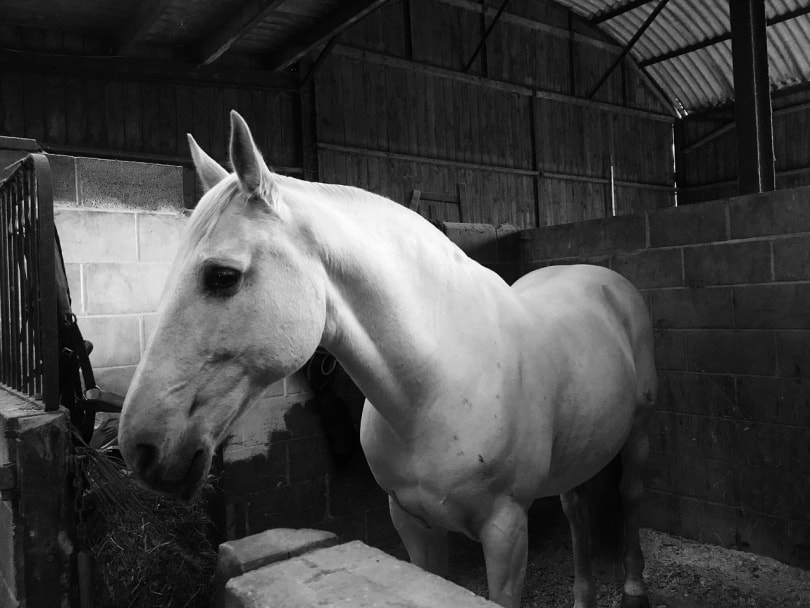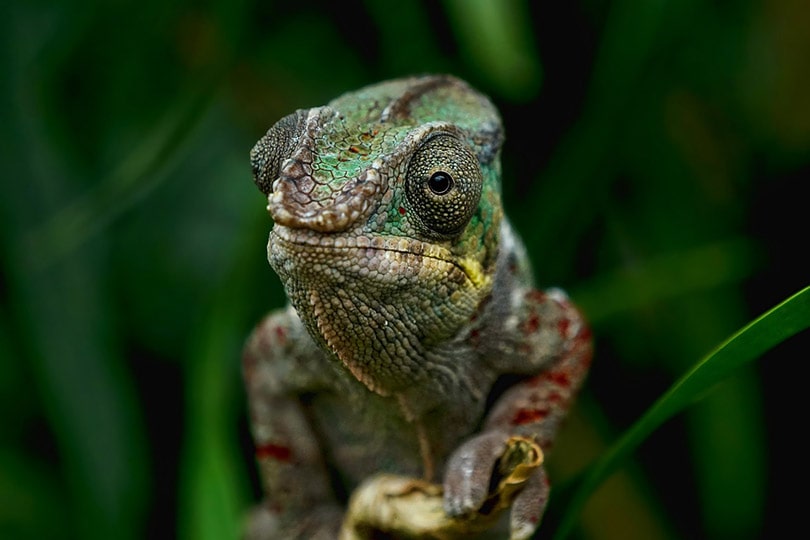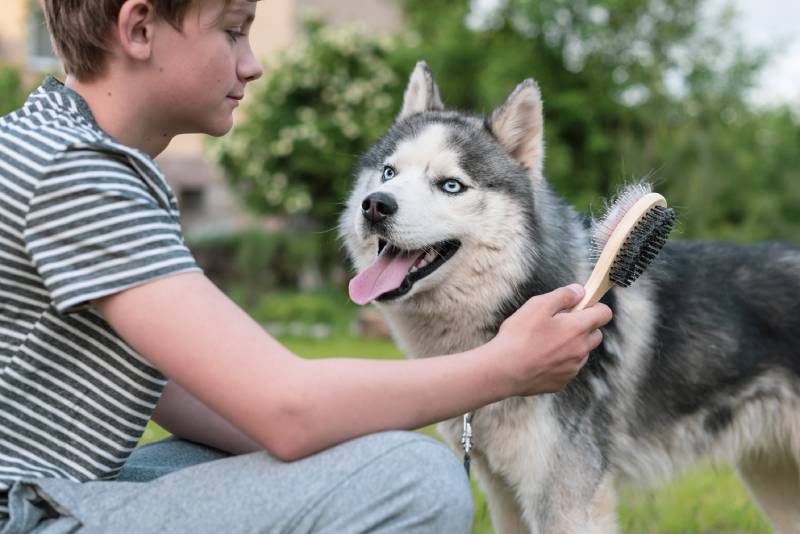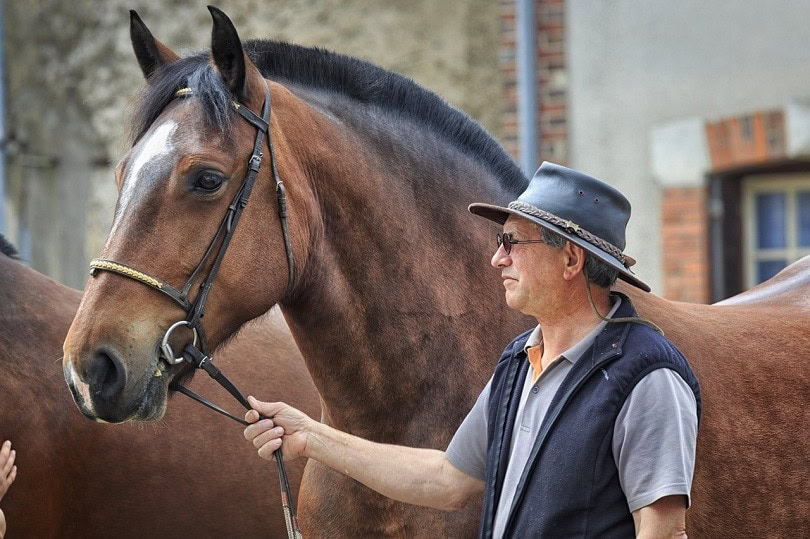Click to Skip Ahead
Over 7 million horses are kept as pets and working animals in the U.S.1 Owners use their horses for travel, sport, companionship, and labor.
Keeping these animals is a long-term commitment, however. Exactly how long do horses live? Depending on their diet and living conditions, horses can live for about 25 to 30 years, though some can live longer with proper care. The oldest domestic horse was Old Billy, who lived to be 62 years old.2
Read on to learn more about the average lifespan of a horse and the factors that can increase or decrease their lifespan.

What’s the Average Lifespan of a Horse?
The average horse lives for 25 to 30 years. Some horses live longer or shorter lives, depending on unique factors. Ponies, which are horses that are under 14.2 horse hands, may live as long as 40 years. Conversely, draft horses, such as Percherons and Clydesdales, have shorter lifespans.
Why Do Some Horses Live Longer Than Others?
Wild horses live shorter lives than their domestic counterparts, largely due to the lack of adequate nutrition, veterinary care, and safe shelter. These issues also have an impact on domestic horses that are in abusive and negligent environments.
1. Nutrition
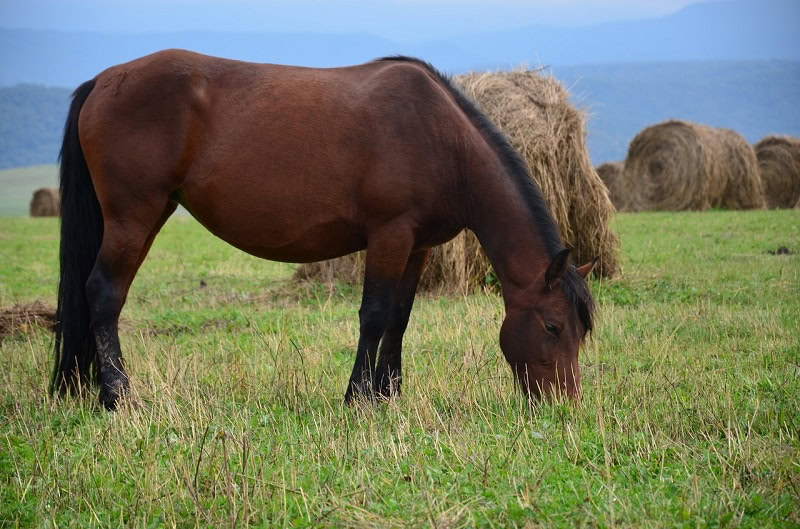
A horse’s diet primarily consists of hay or grass. These animals are non-ruminants, unlike cattle, and don’t have a multi-compartmented stomach. Despite this, they are ungulates and require near-constant grazing to keep their digestive system moving. Horses do well on small meals of hay and grain throughout the day, along with access to fresh, clean water.
Horses are susceptible to three different conditions related to nutrition that can be fatal.
- Colic: A painful condition in the digestive tract that may be caused by a buildup of gas or food. A horse can’t regurgitate their food, so if they eat and have stomach upset, they respond by not eating or drinking. This can cause food material or gas to build up in the gut, which can shift in position and cut off the blood supply. Regardless of the cause, this condition can be severe enough to require surgery or lead to death.
- Founder: Also known as laminitis, founder has numerous causes, but excess grain and lush grass are among them. With this condition, the bone inside of the horse’s hoof pulls away from the hoof wall and rotates forward. In severe cases, the bone may rotate forward through the sole of the hoof, causing severe pain and infection. With early intervention, founder can be treated, but prolonged cases can lead to the need for euthanasia.
- Rhabdomyolysis: Often caused by nutritional or electrolyte deficiencies, exertional rhabdomyolysis can cause sweating, rapid heartbeat, uncontrollable muscle contractions, and painful, firm muscles. While manageable with proper nutrition and supplementation, rhabdomyolysis can be life-threatening and may cause muscle breakdown and death.
2. Housing
Horses need shelter to protect them from inclement weather. At minimum, your horse should have a simple three-sided shelter, but a fully enclosed barn or stable with stalls is the best option. Enclosing them protects from rain, wind, snow, heat, and insects.
In extreme weather, horses may need additional care and interventions. If it’s cold, horses should have blankets, sheets, and if necessary, insulating underlayers. The blankets and sheets should be waterproof and tear-resistant. In the heat, horses should be given access to clean water and a salt lick or electrolyte supplement to prevent imbalances and dehydration. They should also have shade from the sun. If the horse has a heavy coat, body clipping or trace clipping can enable them to release heat more efficiently.
3. Size
Most people are familiar with how size affects the lifespan of dogs. The same can be said of horses. Large breeds, such as drafts, typically have shorter lifespans than ponies or small horses like Welsh ponies and Arabians.
So, when is a horse considered to be old? That depends on the breed and type, but most horses are considered old at around 25 years of age. That’s approximately 70 in “human years.” Competition horses are said to be at their prime around 10 to 12 years old, while racehorses are at their prime when they hit sexual maturity and full skeletal development, which is between 4 and 5 years.
4. Exercise
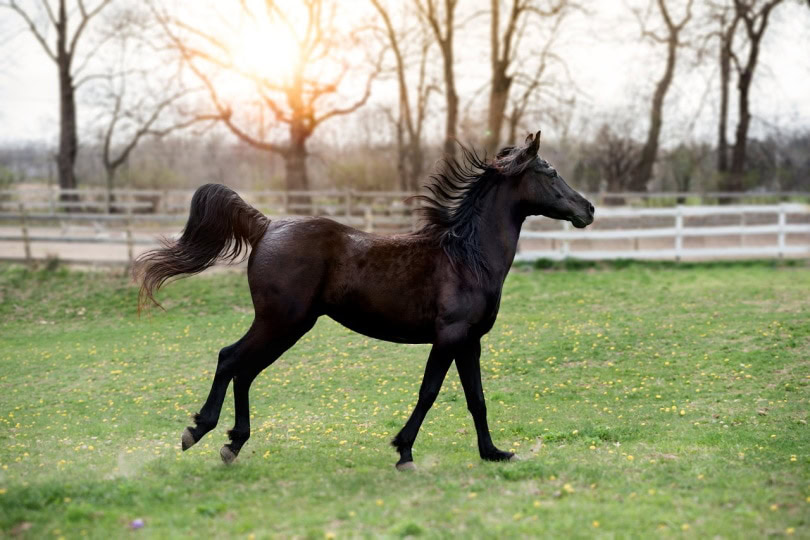
Horses are flight animals and need exercise to stay healthy. Whether through regular work, competition, or light trail work and ample pasture space, they need activity to stay fit. Older horses are prone to joint conditions like laminitis and arthritis, which can be slowed by regular conditioning. They should never be confined to a stall and require regular turnout in a field.
Keep in mind, however, that exercise should be appropriate for the horse’s physical condition, age, and health. Working this animal too intensely or frequently can be as detrimental as too little.
5. Genes
There are over 300 horse breeds in the world, all with different histories. As animals of utility, horses have been selectively bred for different purposes, such as sporting, pulling carts, or driving cattle.
Certain breeds are more susceptible to genetic diseases, which can impact their lifespan. For example, Arabian horses are prone to producing immunodeficient foals, while Appaloosas are prone to congenital eye conditions.
In addition, horses bred for specific purposes may have shorter lifespans as a result of their jobs, not the breeds themselves. For example, racing Thoroughbreds tend to begin racing around 2 years old and typically retire by 10 years old. They start before their joints fully develop, which can lead to current injuries or joint problems that crop up in the future. Racehorses are also frequently euthanized during their racing careers due to injuries and may be subjected to abuse or neglect that impacts their health.
6. Health Care
Horses are susceptible to many health conditions that can be prevented with vaccinations and proper veterinary care.
- Rabies
- Tetanus
- Encephalomyelitis
- Influenza
- Herpes
- Botulism
- Potomac horse fever
- Rotavirus
- West Nile virus
- Strangles
In addition, regular veterinary exams can identify potential problems in the early stages for more effective treatment.
Horses need regular hoof care. The hooves are one of the most fragile areas of the animal and absorb the shock of running on hard ground or landing after jumps. Depending on the individual, a horse’s hooves should be trimmed every month or 6 weeks, and most benefit from custom-fitted horseshoes on the front or all four feet. Those with weak hooves may benefit from a hoof supplement.
In addition, horses need regular dental care from a qualified equine dentist. Their teeth never stop growing, so hooks, uneven growth, or other problems can affect their eating habits.

The 7 Life Stages of a Horse
1. Embryonic Stage
A horse’s gestation period is 11 to 12 months. These animals have poor reproductive performance, however, and may suffer embryonic loss due to stress, uterine infections, hormone abnormalities, twinning, and fever. Proper care during pregnancy helps prevent spontaneous abortion.
2. Foal
Baby horses are called foals from birth to 1 year old, regardless of sex. Although they can stand and walk within hours of birth, foals nurse from their mother until 4 to 7 months of age.
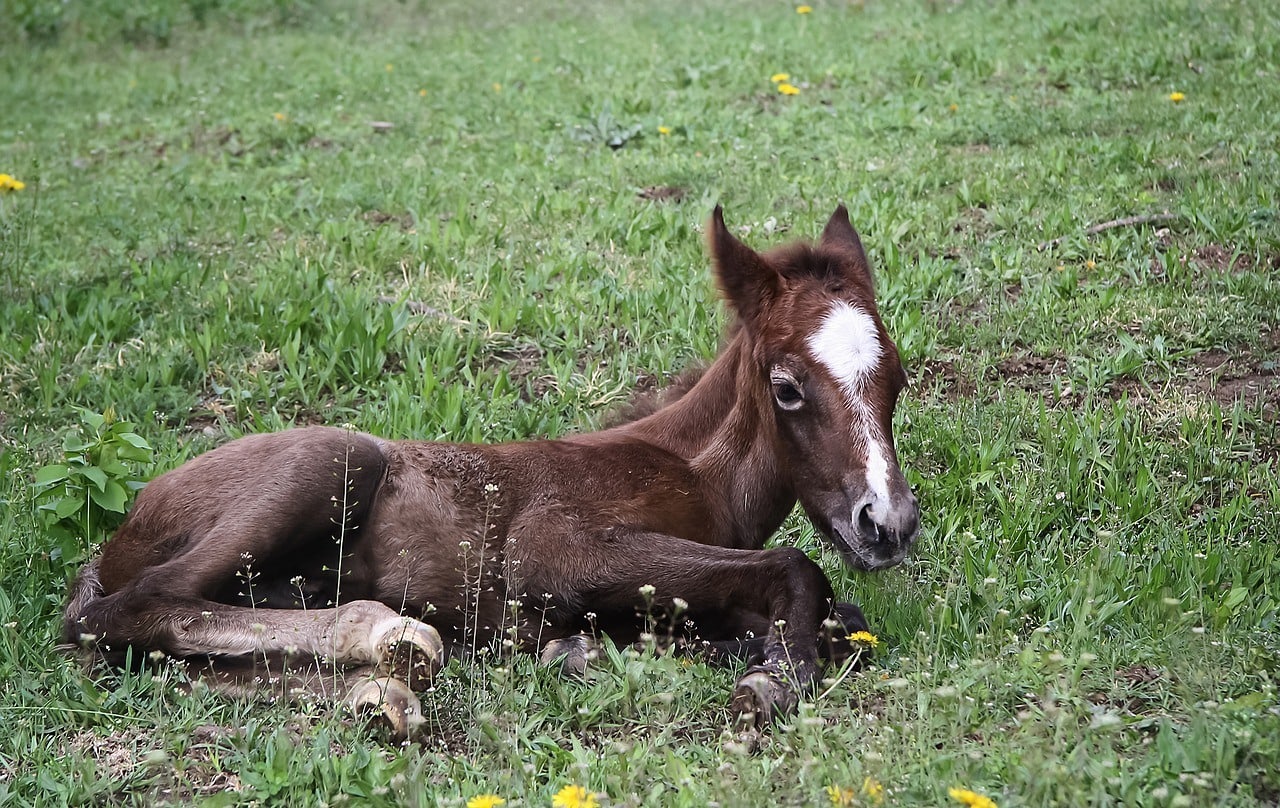
3. Weanling
Horses are weaned between 4 and 7 months. At 4 months, the foal’s nutritional requirements exceed what’s available in the mare’s milk, and most are started on grain and hay or grass.
4. Yearling
Yearlings may refer to horses that are 1 or 2 years old, regardless of sex. They are fully weaned and can be started with halter training and basic manners.
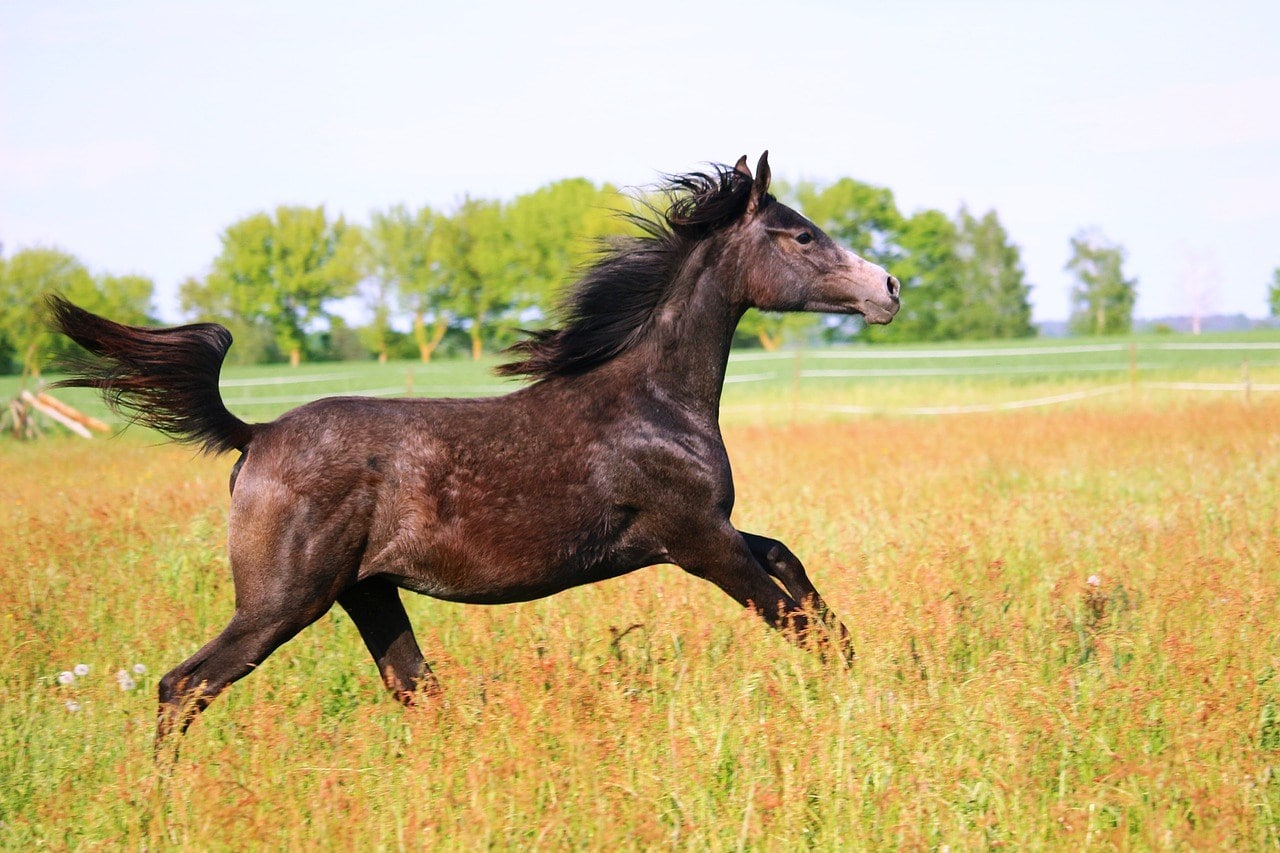
5. Colt or Filly
As they approach sexual maturity, male and female horses are referred by different names. Colts are male horses under the age of 4, while fillies are female horses under the age of 4.
This life stage is when horses begin groundwork to prepare for riding, such as saddling and lunging. Actual riding is usually reserved for when they’re about 3 or 4 years old, when the horse’s skeletal development is mature.
6. Stallion, Mare, and Gelding
After sexual maturity, horses are still referred to by their sex. Stallions are intact (non-castrated) males over the age of 4, while geldings are castrated males over the age of 4.
Mares are female horses over the age of 4. Spaying, or removing some or all of the reproductive organs, is rare in these animals. Spaying a horse is an expensive and complicated procedure that’s prone to complications. In addition, mares are less likely to develop hormone-related behavioral issues than stallions, and the chance of accidental breeding is slim. Most male horses are gelded, though, and stallions are typically kept away from mares to avoid behavioral problems.
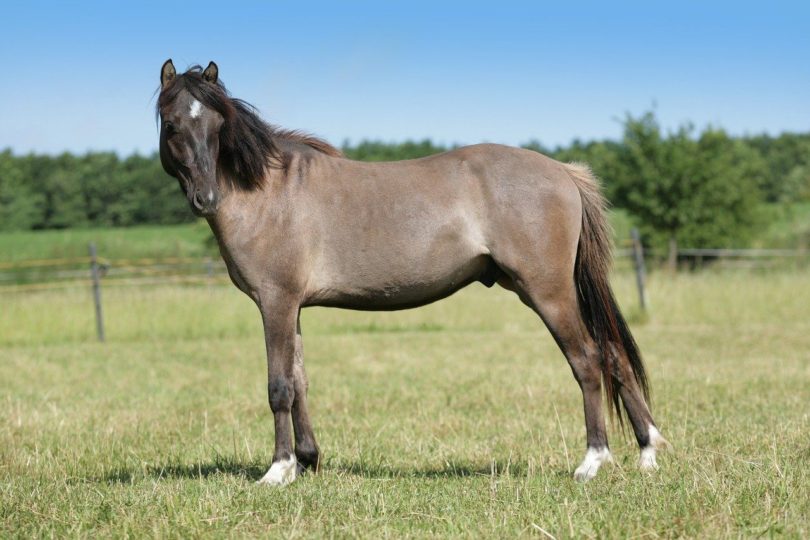
7. Senior
A senior horse is generally considered a horse that’s 15 years old or older. Many horses still work and compete at this age, however, so it’s more of a guideline than a strict rule.
Truly senior horses may need more support and care to address their needs. Geriatric horses may experience poor topline condition, coat and hoof quality, and nutrition absorption, along with weight loss and dental issues. Senior feed and supplementation may help manage some of these age-related concerns.

How to Tell Your Horse’s Age
One of the most common ways that people age horses is by their teeth. Although inexact, a horse’s teeth can show age with relative accuracy. Wear on the teeth can mask different circumstances, however, such as a horse that was stabled vs. a horse that was pastured and experienced increased wear on the teeth from grazing.
Age determination involves studying the 12 front incisors. The canine teeth appear around 4 or 5 years old in geldings and stallions but not mares. Other ways include checking for the occurrence of permanent teeth, evaluating the surfaces of the teeth, looking for the disappearance of cups, and measuring the angle of incidence, or the angle of the meeting of the upper and lower jaws.
Another way to check a horse’s age is with a tattoo. Racehorses typically have a tattoo under the lip that includes a letter denoting the year of birth and a series of numbers. The tattoos can fade over time, but the combination of the estimated age from teeth, their physical appearance, and any legible numbers or letters can positively identify a racehorse. This number can then be used to look up their pedigree and race records and determine their exact birthdate.
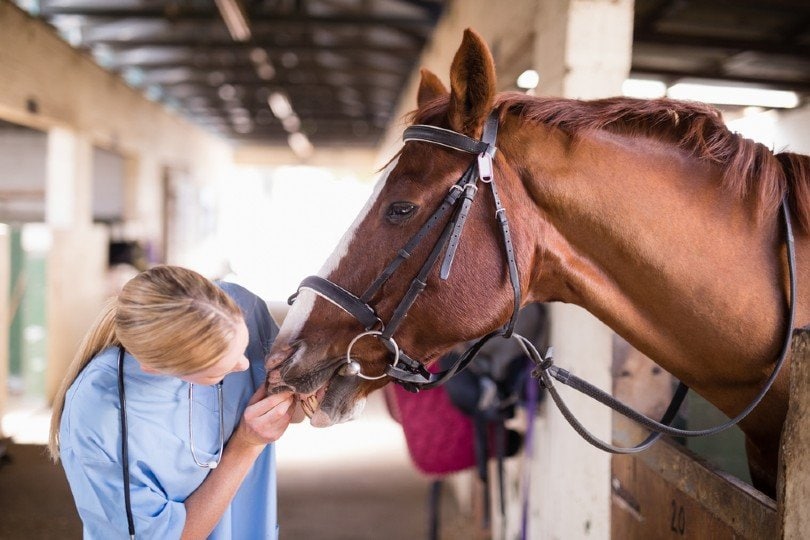

Conclusion
With good care, horses can live healthy, happy, and useful lives well into their senior years. Careful attention to nutritional needs, exercise, dental and hoof care, and proper housing can preserve a horse’s health as a competition, work, or companion animal. Even senior horses that no longer work can be lovable pasture pals to younger horses.
Related Reads:
Featured Image Credit: bellajojos, Pixabay
